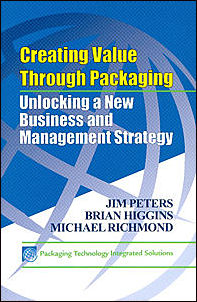Managing Packaging Workflow: A Seminar in Print for BRAND MARKETERS
Our series detailing the brand manager’s role in managing packaging workflow continues with the third of four articles. This month’s article continues our look at packaging from concept to production and some of the challenges and solutions that arise along the way.
As we discussed in the previous article, the packaging workflow begins with the initial concept of a product and how it will be packaged, and then moves on to design, where both the graphics and the structure of the package are articulated.
For the purposes of this third article, we will pick up our examination of the workflow here, after the product and package design stage has been completed, and we have moved on to proofing and pre-production.
Executing the design
Once all of the stakeholders in the packaging workflow have agreed on the graphic and structural design of the package, it is time to begin thinking about how that package design will be executed—how will it be proofed, printed and finished?
In addition to concerns about manufacturing costs and efficiencies, one of the key factors during this stage of the process is determining how the printer/converter will achieve a final package that is as true as possible to the intentions of the original design. This is where accurate proofing comes into play.
There are normally two different types of approvals required during this phase. The first is what we can refer to as a conceptual approval. That is, are we using the correct logo and other artwork, are the colors specified correctly and is the copy correct? At this point in the process, the legal department is involved to make certain that all of the required regulatory and legal language is present and correct. The graphic designer is also involved at this step to be sure that this proof matches his digital artwork files from a conceptual standpoint. Naturally, the brand manager and his team are also a critical stakeholder at this point, making sure that the correct message is being communicated through the packaging.
This type of proof is normally generated by a low cost proofing device, typically an inkjet printer, because the intent here is to ensure that there are no elements of the design that are incorrect or missing. Because minor elements of the design may still be changing at this point, the emphasis is on a quick, inexpensive proofing process.
Setting realistic expectations
Once the conceptual proof has been approved, the next step is to generate a color accurate proof. This proof is used to ensure that the printed piece will match the original design. Because this proof must accurately match what will eventually come off the printing press, a more sophisticated digital proofing device is used.
In order to match what will be printed by a specific printing press as closely as possible, color management software can be used to “fingerprint” the printing press. Fingerprinting refers to the process of measuring attributes of a specific printing press, for example, what kind of color space it can handle.
“When it comes to the color rendering, the color management software must be able to take into account any special inks that will be used, what substrates or materials will be printed on and what finishing techniques will be employed. All of these factors and more must be taken into account in order to generate a good proof,” explains Jan de Roeck, worldwide marketing director, packaging software, Esko-Graphics.
“What is a bit more difficult,” he continues, “is the challenge of making a proof that matches exactly what a particular press will produce. Your proofing device must match and take into account any limitations a particular press might have, or you will have a design that prints beautifully on a proof, but once the job gets on-press the outcome will be very different. This creates false expectations on the part of the brand owner; essentially they have signed off on a design that can never be achieved by the printing press. And as you can imagine, that becomes the basis for some serious discussions among all parties involved.”
Another area where unrealistic expectations can be created is when considering how specific inks will be layed down and in what order. As you can imagine, the order in which the inks are layed down by the printing press will determine what the end result will be. But does your printer’s color management software take this into account?
For example, in packaging we often use opaque inks; think of an opaque gold or an opaque silver ink on a label. If the order of the opaque ink is changed within the sequence of five or six other inks that are being layed down, the end result will be completely different than what was intended.
“If your color management software doesn’t have the capability to understand the concept of ink order,” explains de Roeck, “you will create a proof that is totally unlike what you will get from the printing press. This often happens with beer labels. If there is black text on a silver background, imagine what would happen if you were to change the order of the inks. All of a sudden the black text, that’s intended to be visible, is buried under the opaque ink and the type disappears.”
Stay tuned for the final installment of our Packaging Workflow Seminar in Print, which will appear in the October 2005 issue of BRANDPACKAGING. The final article will examine how packaging workflow software can be integrated into existing product life cycle management systems to build a powerful brand platform.
Webcenter: Secure Project and File Management on Any Desktop Anywhere in the World
In package design, many supply chain partners have influential roles in the development of a project. All the players need access to information from others, but often it’s not accessible, residing in various computers, locations and companies. Collaboration is essential, helping reduce critical product time to market requirements, as well as cost. It increases efficiency by enabling external communications between the brand owner and the packaging converter and its customers—or internal communications between graphic designers, structural designers, management, marketing and sales people. WebCenter, the collaboration and asset management server within the Esko-Graphics Scope workflow and part of the Design Life-Cycle Management initiative, ensures that all partners in the packaging supply chain can efficiently and accurately share digital information 24 hours a day, seven days a week. WebCenter provides secure project and file management on the desktop - anywhere there is web access - in real time. Users can manage projects and documents from work, from home, or anywhere in the world. Projects in WebCenter can contain any type of document, including ArtiosCAD files (or other CAD files), graphic files, spreadsheets, proposals, purchase orders or customer specifications. WebCenter automatically maintains version control and history for each document stored on the server. As documents are added or updated to projects, the version history for each is automatically maintained. The identity of who made changes - and when and why - is always available to increase communication and reduce errors throughout the company.
WebCenter allows you to review and approve documents, reduce and eliminate development cycles and save time and money. It also increases efficiency and eliminates wasted effort in your business so you can get more done with the same amount of people.
As business pressures increase, time-to-market becomes more and more critical. With WebCenter, users are able to virtually review and approve documents, reduce and eliminate development cycles and save time and money.
For more information about WebCenter or any of our other products, please visit our website at www.esko-graphics.com, call 937.454.1721 or e-mail us at info.usa@esko-graphics.com.
WebCenter provides a number of innovative features, including:
Project Management: Every project has a project manager who “owns” the project. To maintain tight security, users can only view projects to which the project manager has invited them
Document Management: Any type of file stored in WebCenter is a “document” and is associated with a project. Every project document is tracked and automatically maintained by Version History. Only one person may change a document at a time, eliminating errors
“Check In” and “Check Out” features allow users to make changes to documents. Only one user at a time can check out a document, but others can still view the most current version and are notified that the document is being edited
Security Model: WebCenter security is project-based. A user’s access to a project is managed by the project manager, who can invite and un-invite users. Users can only view or search for projects to which they belong
WebCenter Cart: WebCenter allows users to add documents to a cart and then download files or send links to other users. The cart not only supports documents, but also downloads and links for entire projects - combined into a single ZIP archive for easy and compact download
My WebCenter: Is a menu where each user’s personal items are stored, such as the profile settings and cart, a list of favorite projects, a list of all documents that have been checked out and password
Language support: Users can work with WebCenter in English, French, German, Spanish, Italian, Japanese, Chinese and Thai. Each user works with WebCenter in his/her native language
Looking for a reprint of this article?
From high-res PDFs to custom plaques, order your copy today!







